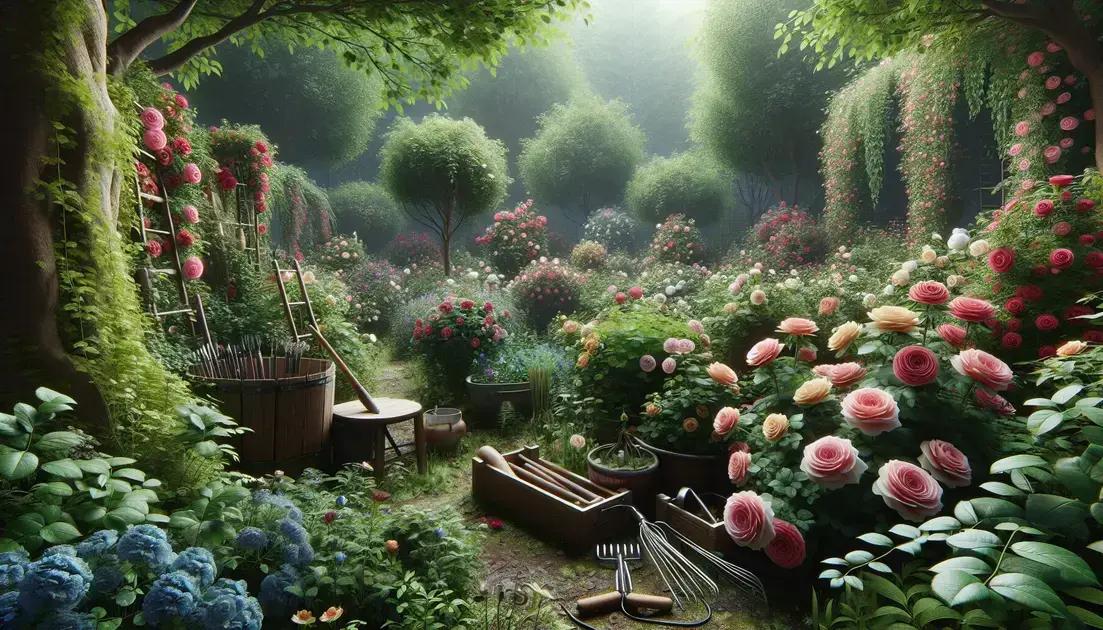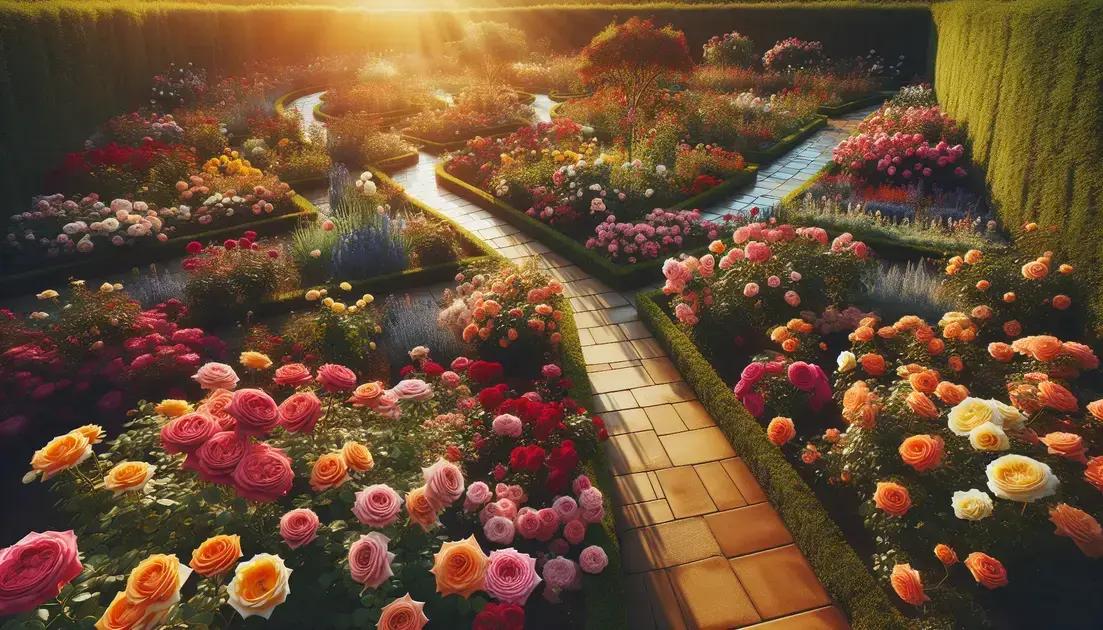A well-designed rose garden layout requires a sunny spot, careful grouping of rose varieties, clear pathways, and consideration of companion plants to enhance beauty and improve maintenance.
Rose garden layout can transform your outdoor space into a breathtaking haven. Have you ever wondered how to create a blooming paradise right in your backyard? Let’s explore some insightful tips to help you get started.
Choosing the right roses for your garden

Choosing the right roses for your garden is essential for creating a vibrant and beautiful landscape. There are numerous varieties of roses, each with unique characteristics and requirements. Hybrid tea roses, for example, are known for their large blooms and classic form, making them a popular choice for many gardeners.
Understanding Rose Varieties
Before selecting roses, consider the different types available. Floribunda roses produce clusters of flowers and provide continuous bloom, while Climbing roses can add vertical interest by growing on trellises or fences.
Climate and Soil Conditions
Always check the climate zone in your area. Some roses thrive in warmer climates, while others prefer cooler temperatures. The soil quality is also vital; well-draining, nutrient-rich soil promotes healthy root development. You might want to perform a soil test to determine pH levels and nutrient availability.
Maintenance and Care
Consider the maintenance level you can commit to. Some roses require more care than others, including regular pruning, pest control, and watering. Low-maintenance varieties are ideal for beginner gardeners who want beautiful blooms without extensive upkeep.
Finally, think about what look you want to create. Mixing different types of roses can bring out a vibrant color palette and diverse textures in your garden. Have fun experimenting with various combinations to develop a stunning rose garden.
Designing the perfect layout for a rose garden

Designing the perfect layout for a rose garden requires careful planning and creativity. The first step is to choose a location that receives at least 6-8 hours of sunlight each day. This is crucial for healthy rose growth. Aim for a spot with well-draining soil to avoid root rot.
Creating Pathways
Paths in your rose garden help with accessibility and maintenance. Utilizing gravel or stepping stones can create a charming look while allowing easy access for pruning and watering. Ensure that paths are wide enough for walking comfortably.
Grouping Roses
Group roses by their color or type for a striking effect. Consider placing taller rose varieties in the back and shorter ones in the front. This layering not only maximizes visibility but also creates depth in your garden design.
Container Roses
If space is an issue, consider using containers for some of your roses. This method allows for flexibility in arranging your garden and can also complement other plants in the space. Ensure containers have drainage holes to keep the soil from becoming waterlogged.
Incorporating Other Plants
Adding companion plants can enrich your rose garden. Consider planting lavender or herbs around the roses to help deter pests. Additionally, flowering companions can add color and diversity throughout the growing season.
Creating Your Dream Rose Garden
Designing the perfect rose garden layout is an exciting journey. By choosing the right location, grouping your roses creatively, and incorporating pathways, you can create a stunning space. Remember to consider companion plants and container options for added beauty and functionality.
With careful planning, your rose garden can thrive and provide joy for years to come. Enjoy the process and watch your garden flourish!
FAQ – Frequently Asked Questions about Designing a Rose Garden
What is the best location to plant roses?
Roses thrive in locations that receive 6-8 hours of sunlight daily, so choose a well-lit area in your garden.
How do I choose the right type of roses?
Consider your climate, soil conditions, and the maintenance level you can handle. Different rose varieties have unique requirements.
What should I use for pathways in my rose garden?
Paths can be made of gravel, stepping stones, or mulch to allow easy access and enhance the garden’s aesthetic.
How can I improve soil quality for my roses?
Testing your soil can help you understand its pH and nutrient levels. Amend the soil as needed with compost or organic matter.
Can I mix different types of plants with my roses?
Yes, combining roses with companion plants, like lavender or herbs, can deter pests and create visual interest.
What if I have limited space for a rose garden?
Container gardening is a great option. You can plant roses in pots, which allows flexibility and easy management.
